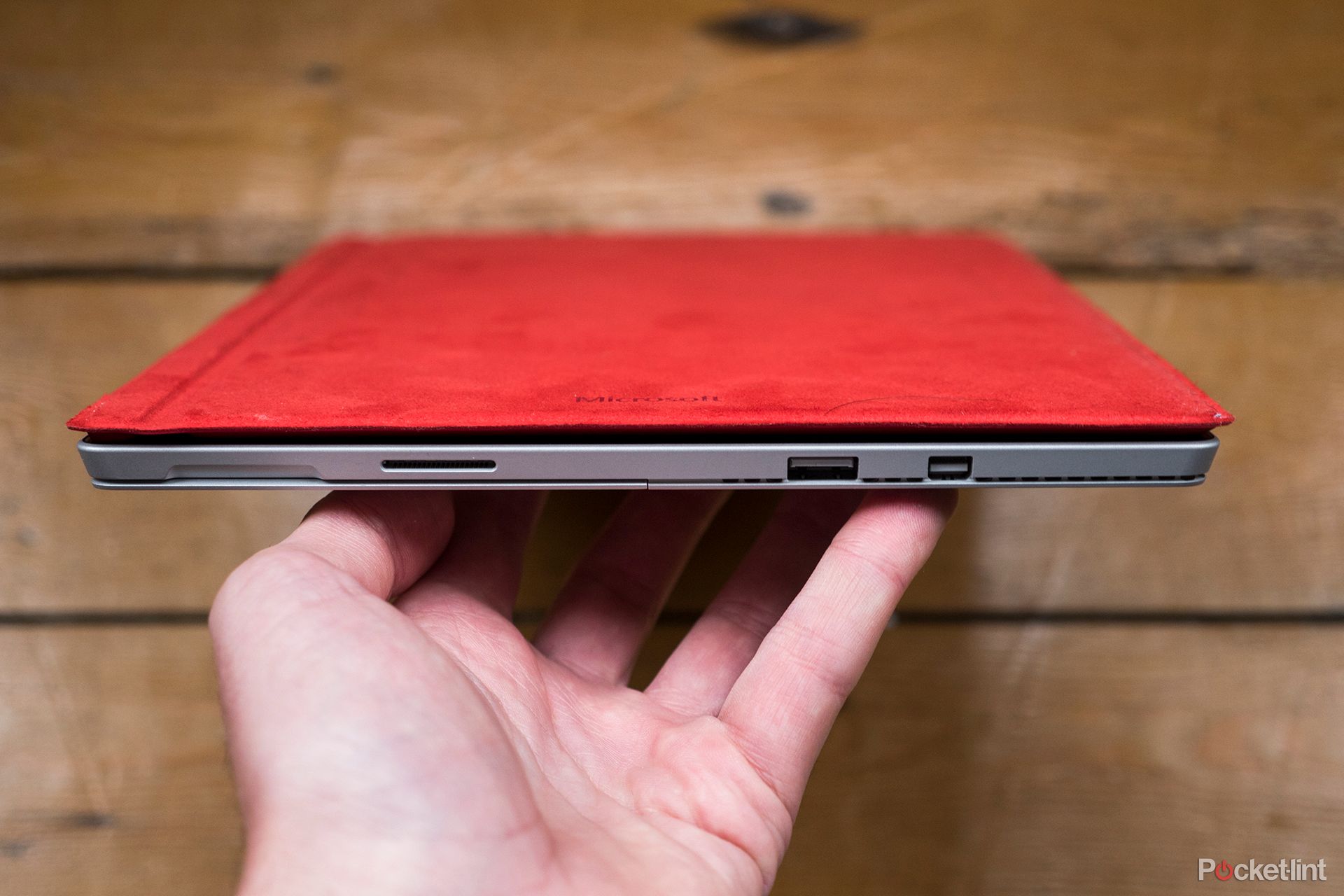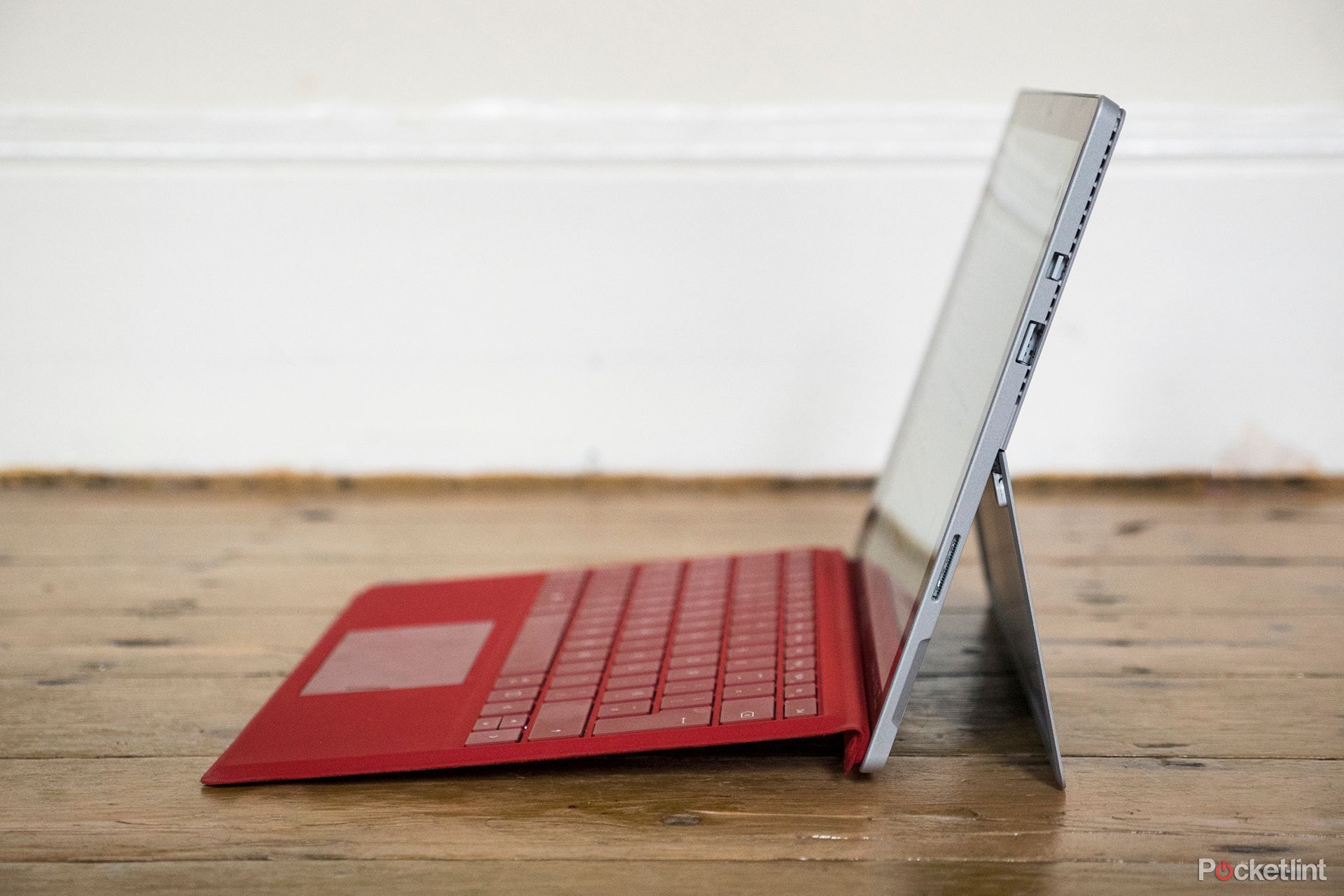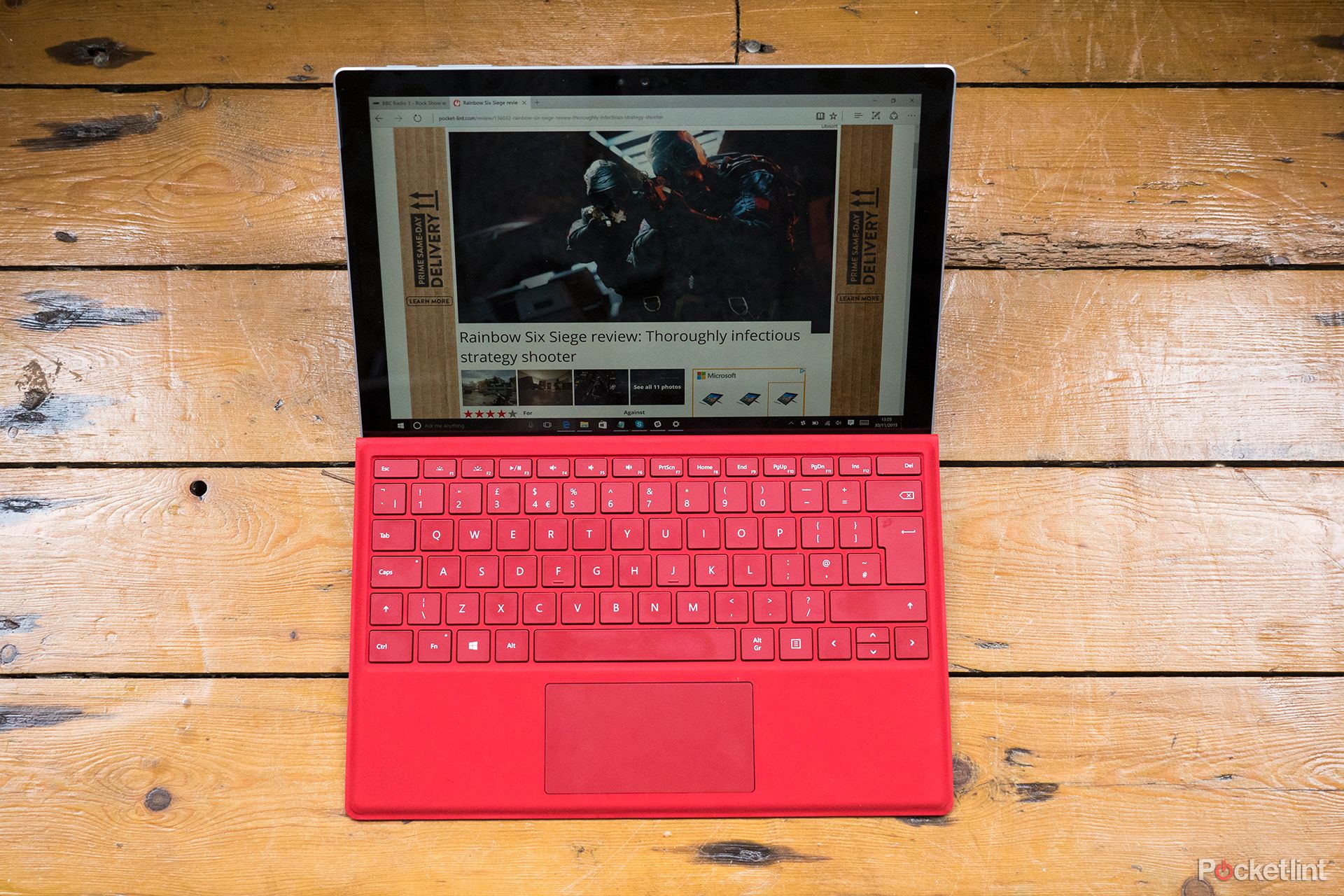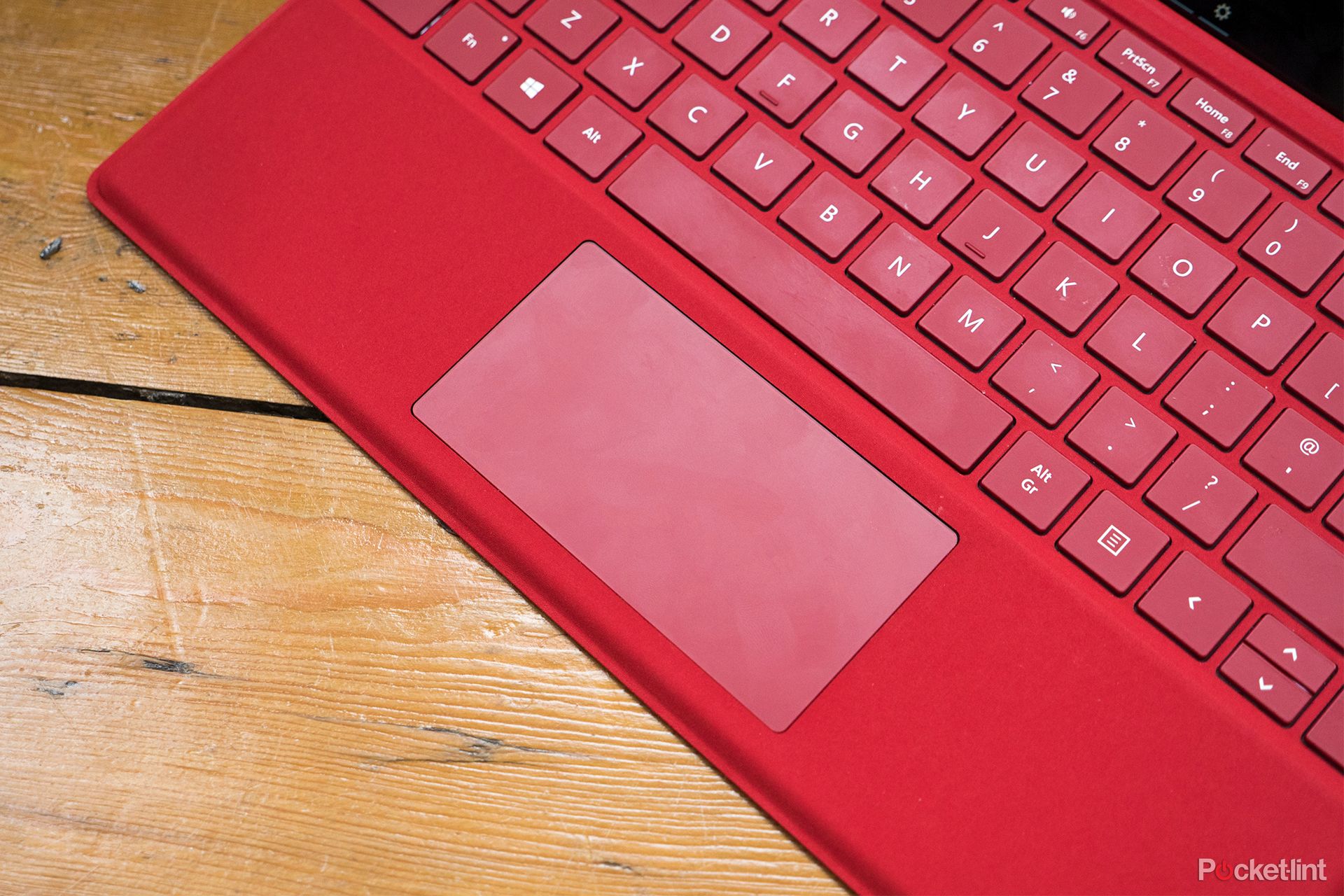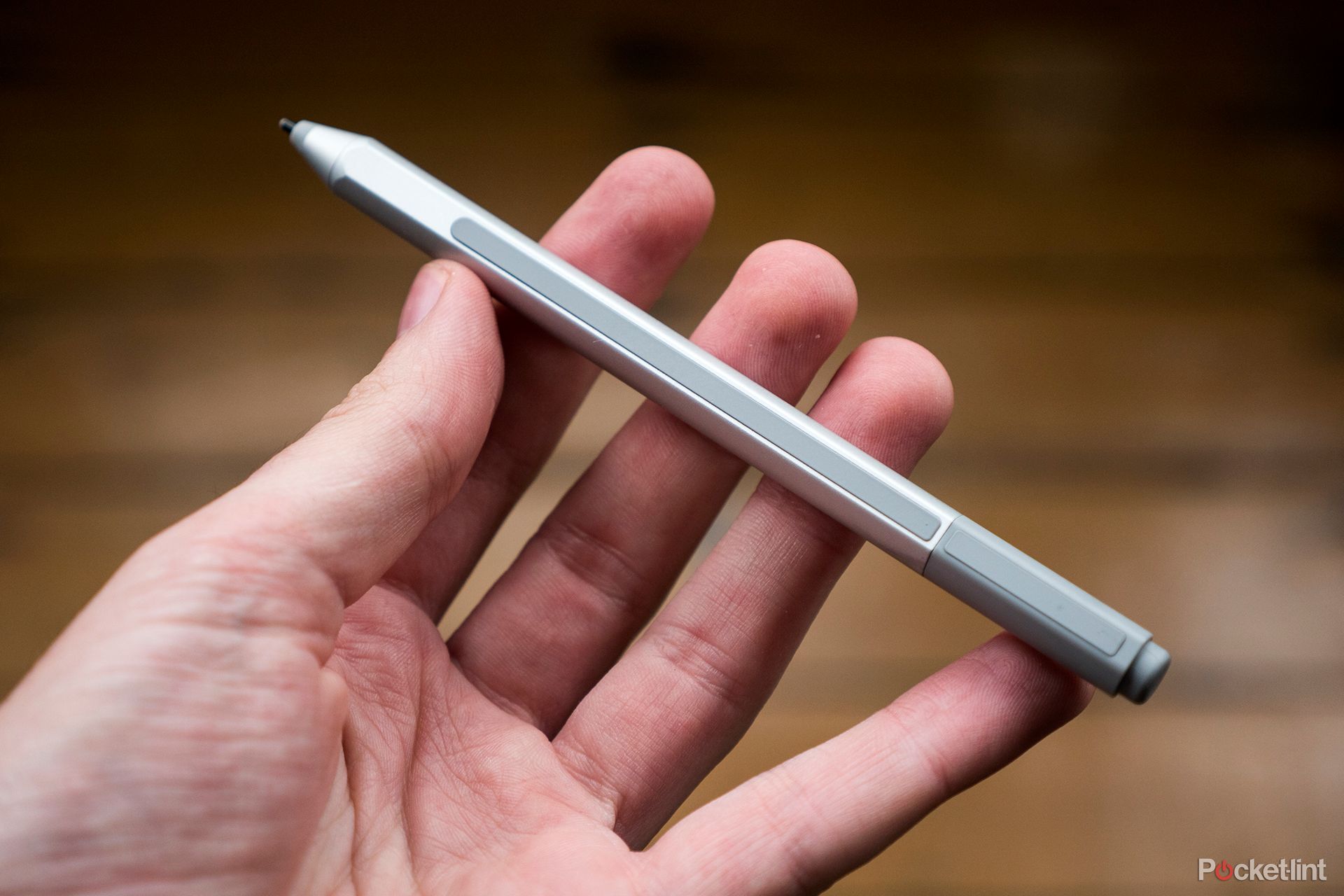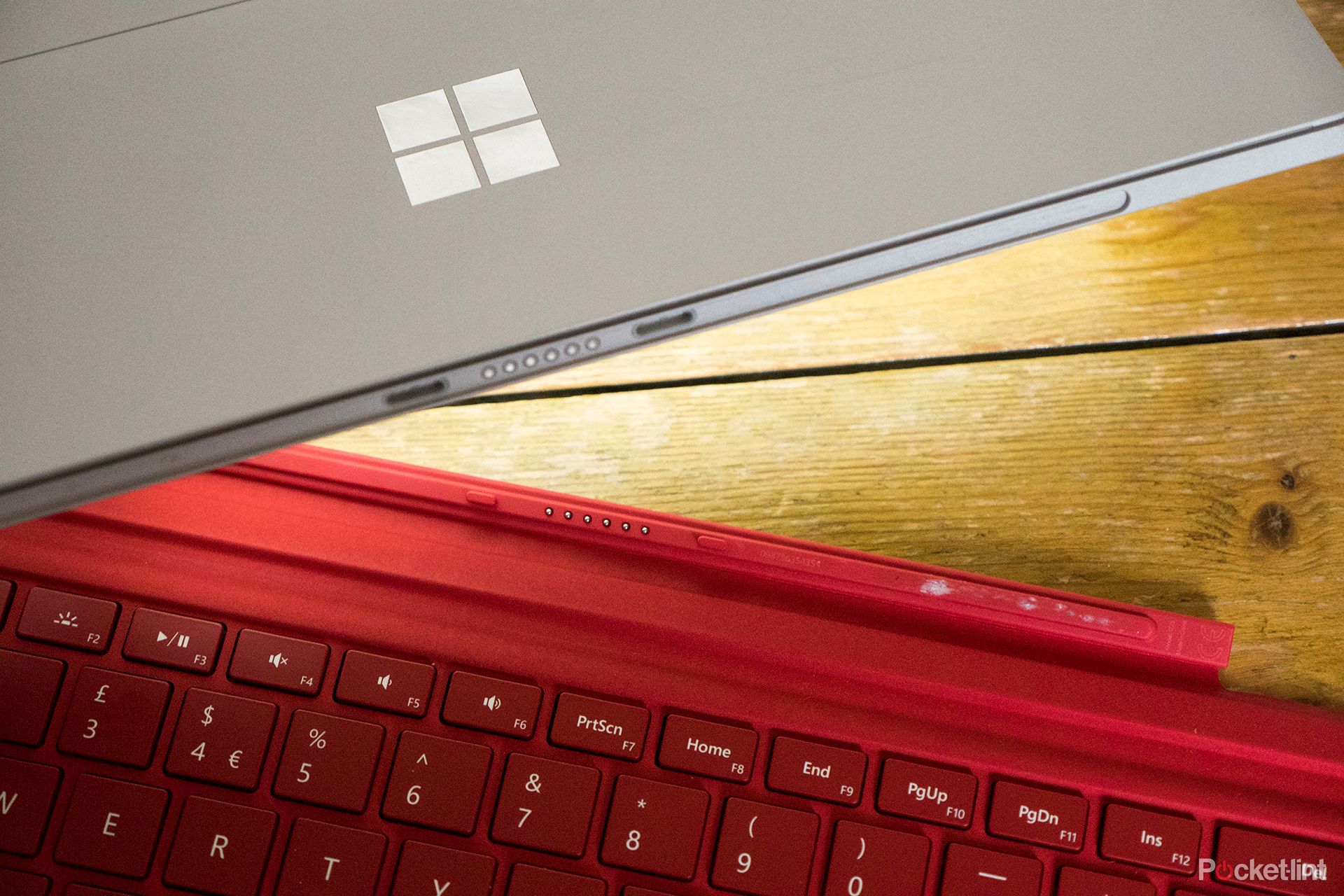Microsoft is probably smiling gleefully: it's got the upper hand on Apple, with the Surface Pro 4 really shaking its tail-feather at the iPad Pro.
Our quick take
Having used the Surface Pro 4 for a week we can see the appeal of it as a laptop-replacement, albeit with some caveats: the battery life isn't good enough, it's potentially rather expensive when specced-up a touch, and Microsoft Office isn't included as standard.
But the Pro 4 is certainly the best Surface yet, and a more accomplished product that the iPad Pro in our eyes. The 12.3-inch screen is beautifully resolute and, while certainly large, fitting for this product. The slender design looks great and that full-size USB port sets it apart from being just another tablet.
But you'll really want that new Type Cover added, which makes for a great typing experience. Or, if you're a stylus user, then the new Pen - which comes in the box - is better than ever.
So yes, the Surface has truly landed; it's garnering the attention it deserves. But we're still on the fence about it, in the same way the product straddles two market categories, in the same way we've felt about the previous products. Bolster that battery life, though, and we'd be sorely tempted to buy the Pro 4 over a laptop given its high points.
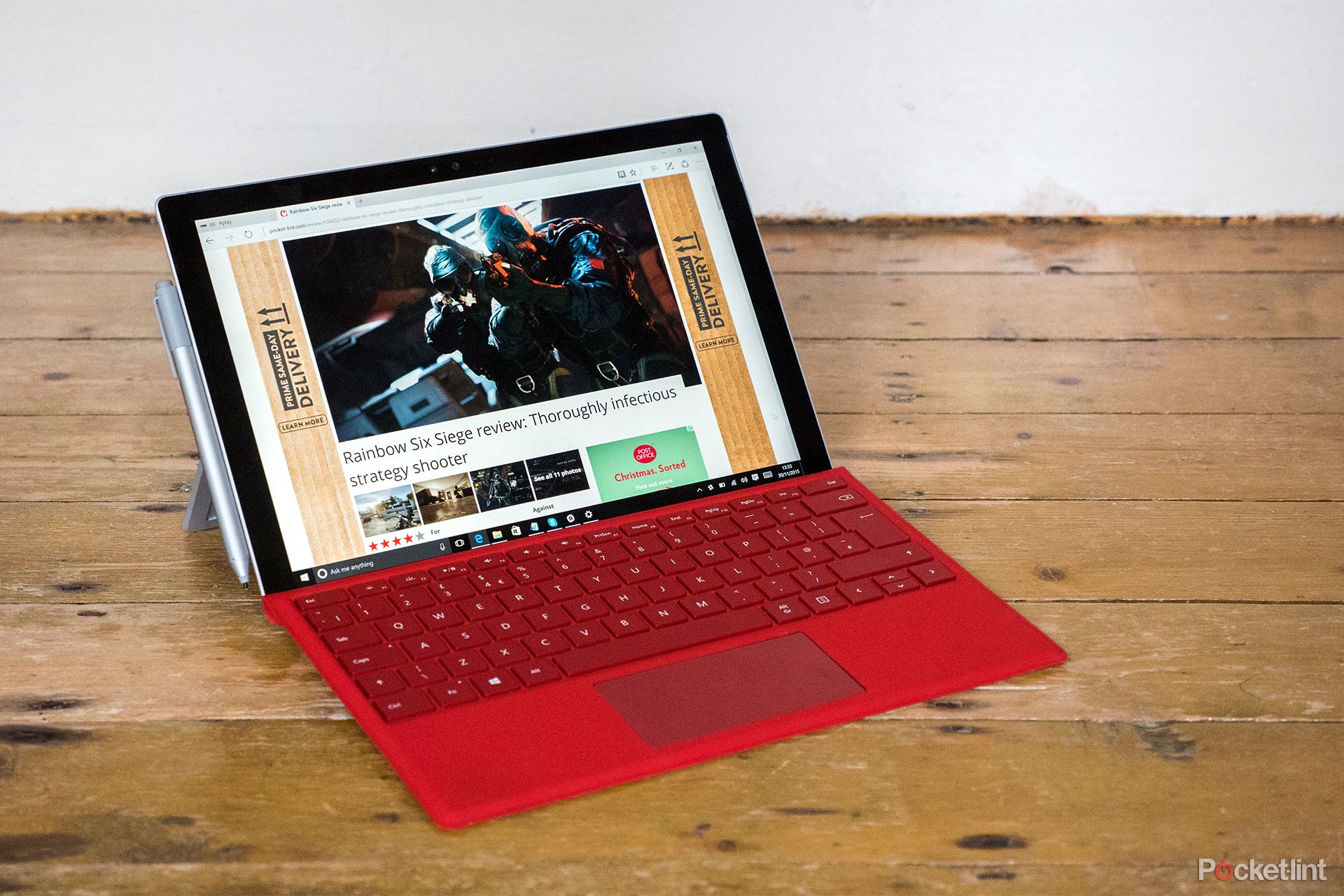
Microsoft Surface Pro 4 - 4.0 / 5
| FOR | AGAINST |
|---|---|
|
|
For the Surface Pro 4 is the most refined and comprehensive model in the Surface series yet - if you're in the market for a laptop-scale tablet, anyway. Or buy the Type Cover keyboard and, voila, you will indeed have a laptop replacement that straddles the fence of both markets.
But it's been a fumbling journey to get this far. With the what-the-heck Surface RT original now a distant memory, there have been round after round of improvements with each product iteration that's followed. The result? The Surface Pro 4 may have finally achieved its laptop-replacement goal in style. Bar for one issue: battery life.
- Which is the best Microsoft Surface device for you?
- Best laptop: All the top notebooks, 2-in-1s and ultraportables to buy today
Microsoft Surface Pro 4 review: Battery life barrier
We've been sat on the Surface Pro 4 for quite a while. Not literally, mind. But with the device available in America ahead of our UK mitts getting hold of the product, it felt only right to give the product the review time it deserved. So for a full week we've swapped our MacBook Air for the Pro 4 (with latest Type Cover added, of course).
And it's been an interesting experience. Interesting in that - and as both Windows and Mac OS X users (with an Android phone thrown in-between for good multi-OS confusion) - there's so much right about the Surface Pro 4. From Windows 10's comprehensive setup, to the great typing experience, to the amount of power on offer if you need that bit of extra oomph (the Intel Core i5 model is reviewed here; the entry-level comes with a Core m3).
Which is great, or would be if it lasted for half as long as it ought to. Day one and after a 09:00 start-up we're down to 36 per cent battery by 13:00. That's a poor show - and half of that usage time included "battery saver" being active and the screen brightness set to "suggested" rather than anything brighter. It'll deliver around six hours use for the basics, which isn't a patch on the MacBook Air we had surrendered.
Herein lies the laptop-tablet-operating-system (and how-many-hyphens-can-we-add?) conundrum: you want slim and light with powerful innards and a fully comprehensive operating system? Sure thing. But you'll pay for that in terms of longevity per charge. Plus when it is on charge the Surface Pro 4 makes a bonkers sound; somewhere between a bicycle tyre with a slow puncture and that barely-audible fizz when electronics are on in the other room - it just sounds plain annoying.
Battery, therefore, is perhaps the one main area where the more tablet-aligned iPad Pro holds greater appeal (despite it running iOS rather than OS X). So we thought we'd get that snub out of the way sharpish, because, by and large, the Pro 4 is otherwise a largely accomplished bit of kit.
Microsoft Surface Pro 4 review: Design
We're on the cusp of a new era in the way data is transferred. Chunky full-size USB ports are in the process of slimming down to USB Type-C, but that's not quite caught on yet, while in the future we'll probably need no ports at all with over-the-air transmission.
For now, though, it's all about the full-size USB as king, which, in part, dictates the Surface Pro 4's size - because there's a single port to its side.
But at 8.4mm it could hardly be accused of being massive; indeed it's slimmer than a variety of modern smartphones, including some flagship devices. That's the only dimensional difference to the last-generation Surface Pro 3 (which was 0.6mm fatter), though, as the Pro 4 follows the same 292 x 200mm footprint - despite squeezing in a larger 12.3-inch display.
That larger screen all comes down to trimming the bezel to more manageable levels; to the point that they're small yet still large enough to grip as a tablet in either vertical or horizontal orientation. It's a good balance. Even though it's not that much larger, the 12.9-inch iPad Pro looks and feels a lot bigger - we side-by-sided the two devices at the EE Pocket-lint Awards 2015 to get a comparative feel.
The Pro 4 is not all held together with sticky tape and hope like some tablets seem to be either. This Surface shows off its "pro" namesake in the build quality department, thanks to a magnesium casing that looks and feels tough, yet is light at just 786g (the Core m3 model is 766g as no fan is needed in that build).
Microsoft Surface Pro 4 review: Screen
But back to that screen for a moment. Oh, that screen. It's a real beaut. Brighter than the last-gen model (we've checked them side-by-side at a preview session), there's more punch from the Pro 4's panel, along with decent viewing-angles and punchy colours. It's still a bit reflective, though, as we found when using the device on a train in daylight, which can be annoying but not debilitating.
But the real headline-grabbing feature of the screen is the new ultra-high resolution. What Microsoft is calling PixelSense means, in this instance, that you get 2,736 x 1,824 pixels across that 12.3-inch panel. Which is just shy of five million of 'em, if you've got a few days to count them under a microscope. And a microscope you would need: the detail is of this panel exceptional, even with face nearly pressed against the screen.
There are caveats to such a screen resolution, however, and in the same way Apple had some compatibility issues when it first launched its Retina display, Microsoft sees much the same. Load up, say, Skype, and the fuzzy low-resolution logo looks clearly upscaled beyond its means. Does it matter? Not really. This stuff will get tweaked over the course of time we're sure. Plus all the key apps work just fine, and this heightened resolution means things like video editing can handle native 1080p with editing tools around the side. Sweet.
But more pixels demands more power and, it would seem, more pounds. Because the Intel Core i5 (2.4GHz) model with 8GB RAM that we're reviewing costs £1,079 - and that's without the Type Cover keyboard included. So £1,188 all-in, then. Which is a lot for a sort-of laptop really.
Microsoft Surface Pro 4 review: New Type Cover keyboard
That new Type Cover keyboard is a whole lot better than the last one though. It's backlit (as before), feels sturdy in either of its two positions (it can click upward for a slanted angle rather than being flat against the desk) and the keys have spot-on resistance. Switching over from MacBook to Surface and it feels totally natural from the off - the only real difference are the small F-keys along the top and an initial tendency to hit the Del key rather than back key to the top right.
The new Type Cover has a glass-topped trackpad that's 40 per cent larger than the last iteration too, which is smooth to the touch and works fairly well. We do wish it was slightly repositioned off-centre, though, over to the right so that a more natural left/right click was possible.
Using the trackpad takes a little getting used to, as soft-touch "clicks" are our preferable way of using it, where the subtlest of touches without a full depression still action as a click. We wouldn't have said that on day one, though, when such responsiveness saw us clicking things willy nilly.
The other obvious thing is that the Type Cover doesn't come included in the box. That might make sense if you're upgrading from Pro 3 to Pro 4 and have the old keyboard to use (that's a benefit of the same footprint design) - but we'd still like it to be an included item rather than accessory.
Microsoft Surface Pro 4 review: Pen stylus
The one major non-accessory included is the Pen stylus, which has seen a revamp for the Pro 4. It has a built-in battery (said to deliver a year of battery life), 1,024 levels of pressure and an end eraser which doubles up as a control button.
It's an altogether neater solution than the dual buttons on the barrel of the last generation Pen. In its new guise you can click the eraser to open One Note, grab a page and scribble notes over it, then fling it in an email. Great, if you're into that kind of thing.
Honestly we've rarely needed to use the Pen, because that's just not how we work. We totally get that some people will largely only use this input, but as the pressure levels aren't going to match the 2,048 levels you'll find in Wacom and other devices, it leaves us wondering why the keyboard is optional and the stylus isn't. We're sure there are creative professionals who will want the Pen, but for those just looking for a laptop replacement the keyboard takes the upper hand in our view.
The Pro 4 also offers now somewhere to store it, resolving one of the biggest bugbears we had with the Pro 3 model. Yep, the new Pen clips on to the left side (when facing the screen) with a strong magnet, ensuring the power charger on the opposite side is still accessible. It seems obvious, but this wasn't the case last time around, so we're pleased to see it fixed up.
Microsoft Surface Pro 4 review: Windows 10
One of the things about Surface is that it runs full Windows 10. You can download executable (.exe) files to install standalone programs, or dip into the Store to buy mobile apps. Which might sound kind of confusing, not least because programmes can exist in different formats in both areas, but it all makes sense for the sake of the wider ecosystem.
For Windows 10 is all about that integrated experience: finish something on your Windows Phone or tablet, pick it right up on the Surface thanks to Continuum. Not that we have a Windows Phone, but the concept of it is great.
Cortana is ingrained in the system now too, the voice-activated "ask me anything" assistant that we've found particularly useful and accurate to our questions. By default results open in Edge, which is a browser that's given us a mixed experience, but it's a solid enough solution.
Having a full operating system does mean a lot of the SSD is required for the install and operation, however. With the 256GB SSD drive on our review model only 236GB is shown as available, with around 179GB of that remaining once factoring in various must-have installs. In short, and despite there being a microSD port on the rear, you'll probably want to avoid a 128GB SSD model, or at the very least be prepared to buy a large mSD card to slot in.
What hugely perplexes us is the absolute absence of a Microsoft Office install. It costs £70 (it's on offer £50 at the moment) a year on subscription which, if you ask us, is ridiculous for a device that costs over a grand. It's made that transition over from Mac to Surface a bit trickier, as while it is possible to use Office Online to view documents, it's read-only. Shame.
That blip - or expense, depending on how you look at it - out of the way, and Windows 10 shows its strength when paired with this level of proper processing power. We've been using Photoshop as per normal and have found it to be just as good, nay quicker, in its Windows form compared to the MacBook Air. Good job. That's the key to Surface: it's got the power. But then it does cost a lot.
In over a week of use the only issue we've had was a black-out crash, which left us thinking the battery was dead, despite this not being the case. Needed a double restart before it was happy again. An oddity that we've never experienced with Surface products prior to now.
To recap
Having used the Surface Pro 4 for a week we can see the appeal of it as a laptop-replacement, albeit with some caveats: the battery life isn't good enough, it's potentially rather expensive when specced-up a touch, and Microsoft Office isn't included as standard.

